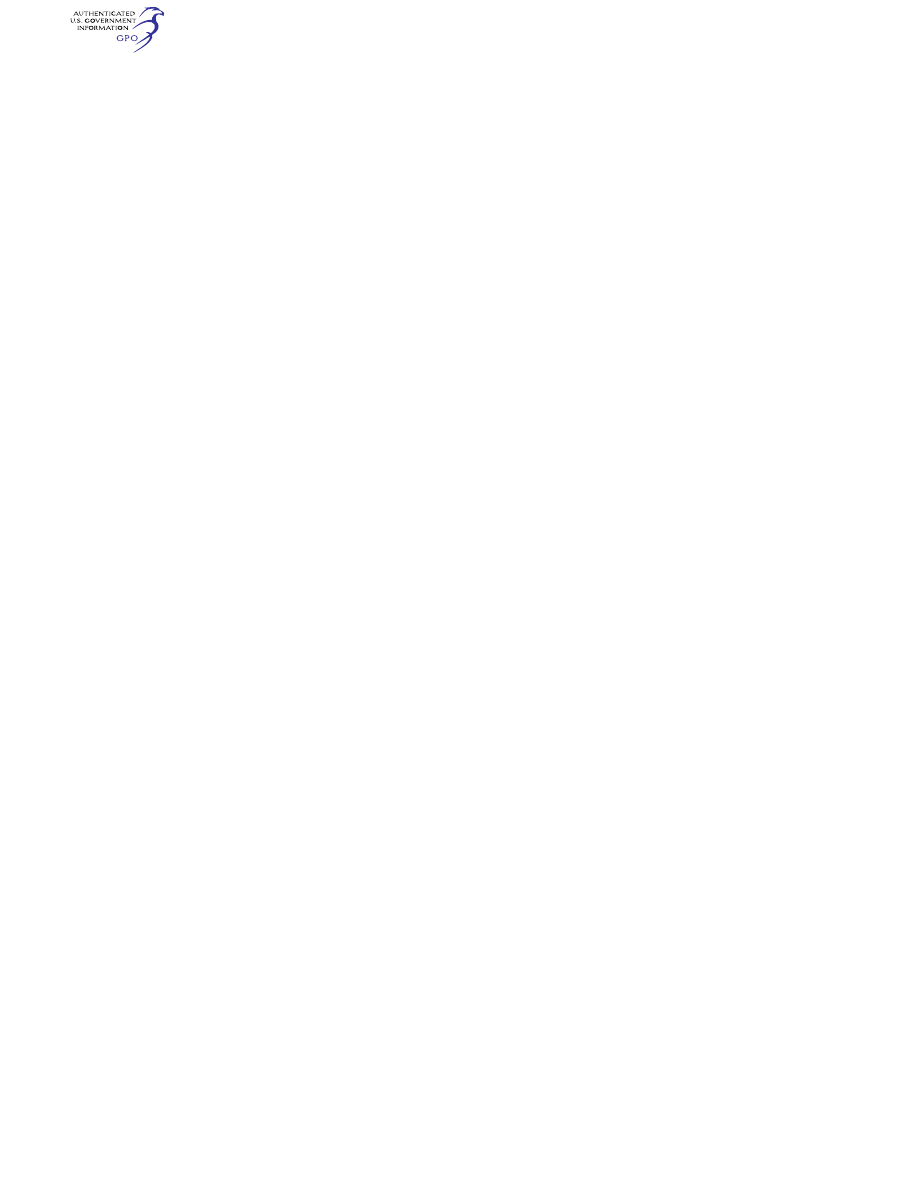
639
Federal Aviation Administration, DOT
§ 29.1001
(c) Each flexible connection in fuel
lines that may be under pressure or
subjected to axial loading must use
flexible hose assemblies.
(d) Flexible hose must be approved.
(e) No flexible hose that might be ad-
versely affected by high temperatures
may be used where excessive tempera-
tures will exist during operation or
after engine shutdown.
§ 29.995
Fuel valves.
In addition to meeting the require-
ments of § 29.1189, each fuel valve
must—
(a) [Reserved]
(b) Be supported so that no loads re-
sulting from their operation or from
accelerated flight conditions are trans-
mitted to the lines attached to the
valve.
(Secs. 313(a), 601, and 603, 72 Stat. 759, 775, 49
U.S.C. 1354(a), 1421, and 1423; sec. 6(c), 49
U.S.C. 1655 (c))
[Doc. No. 5084, 29 FR 16150, Dec. 3, 1964, as
amended by Amdt. 29–13, 42 FR 15046, Mar. 17,
1977]
§ 29.997
Fuel strainer or filter.
There must be a fuel strainer or filter
between the fuel tank outlet and the
inlet of the first fuel system compo-
nent which is susceptible to fuel con-
tamination, including but not limited
to the fuel metering device or an en-
gine positive displacement pump,
whichever is nearer the fuel tank out-
let. This fuel strainer or filter must—
(a) Be accessible for draining and
cleaning and must incorporate a screen
or element which is easily removable;
(b) Have a sediment trap and drain,
except that it need not have a drain if
the strainer or filter is easily remov-
able for drain purposes;
(c) Be mounted so that its weight is
not supported by the connecting lines
or by the inlet or outlet connections of
the strainer or filter inself, unless ade-
quate strengh margins under all load-
ing conditions are provided in the lines
and connections; and
(d) Provide a means to remove from
the fuel any contaminant which would
jeopardize the flow of fuel through
rotorcraft or engine fuel system com-
ponents required for proper rotorcraft
or engine fuel system operation.
[Amdt. 29–10, 39 FR 35462, Oct. 1, 1974, as
amended by Amdt. 29–22, 49 FR 6850, Feb. 23,
1984; Amdt. 29–26, 53 FR 34217, Sept. 2, 1988]
§ 29.999
Fuel system drains.
(a) There must be at least one acces-
sible drain at the lowest point in each
fuel system to completely drain the
system with the rotorcraft in any
ground attitude to be expected in serv-
ice.
(b) Each drain required by paragraph
(a) of this section including the drains
prescribed in § 29.971 must—
(1) Discharge clear of all parts of the
rotorcraft;
(2) Have manual or automatic means
to ensure positive closure in the off po-
sition; and
(3) Have a drain valve—
(i) That is readily accessible and
which can be easily opened and closed;
and
(ii) That is either located or pro-
tected to prevent fuel spillage in the
event of a landing with landing gear re-
tracted.
[Doc. No. 5084, 29 FR 16150, Dec. 3, 1964, as
amended by Amdt. 29–12, 41 FR 55473, Dec. 20,
1976; Amdt. 29–26, 53 FR 34218, Sept. 2, 1988]
§ 29.1001
Fuel jettisoning.
If a fuel jettisoning system is in-
stalled, the following apply:
(a) Fuel jettisoning must be safe dur-
ing all flight regimes for which jetti-
soning is to be authorized.
(b) In showing compliance with para-
graph (a) of this section, it must be
shown that—
(1) The fuel jettisoning system and
its operation are free from fire hazard;
(2) No hazard results from fuel or fuel
vapors which impinge on any part of
the rotorcraft during fuel jettisoning;
and
(3) Controllability of the rotorcraft
remains satisfactory throughout the
fuel jettisoning operation.
(c) Means must be provided to auto-
matically prevent jettisoning fuel
below the level required for an all-en-
gine climb at maximum continuous
power from sea level to 5,000 feet alti-
tude and cruise thereafter for 30 min-
utes at maximum range engine power.
VerDate Sep<11>2014
09:06 Jun 28, 2024
Jkt 262046
PO 00000
Frm 00649
Fmt 8010
Sfmt 8010
Y:\SGML\262046.XXX
262046
jspears on DSK121TN23PROD with CFR